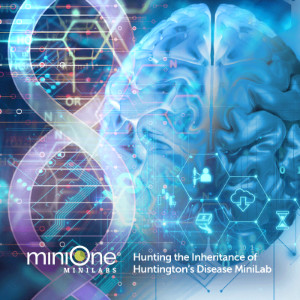Hunting the Inheritance of Huntington’s Disease MiniLab


Hunting the Inheritance of Huntington’s Disease MiniLab (Order no. M3010)
System(s) required: Electrophoresis
In this genetics lab, students will use family history to construct a pedigree, and then using Mendelian genetics, determine the probability of fraternal twins inheriting the disease. They will then confirm genotype via gel electrophoresis.
Description
Huntington’s disease (HD) is an inherited progressive, neurodegenerative disorder that is caused when the neurons (nerve cells) in the brain die. Signs and symptoms of Huntington’s disease include uncontrolled movement, memory loss, mood and behavior disturbances, and deteriorating cognitive (thinking) ability. Most people with Huntington’s disease start to display symptoms typically between 30 and 50 years of age, although there is also a less common form of the disease known as the juvenile form that begins in childhood or adolescence. There is currently no cure for Huntington’s disease but there are medications available to help manage the symptoms.
In this lab, students will examine family history to construct a pedigree and will assess molecular data to make predictions about inheritance of the disease in fraternal twins. Students will then perform gel electrophoresis to confirm genotype.
Appropriate for high school life science, genetics classes and AP Biology.
Materials Included in each MiniLab
Each MiniLab contains enough materials for 10 workstations, 2 – 3 students per workstation. Materials include:
- 5 Ready-to-load DNA samples: (4 samples, 1 DNA ladder)
- Ten 2% Agarose gel cups
- One bottle of 100 mL Tris-Borate-EDTA (TBE) buffer concentrate
- 0.65 mL microcentrifuge tubes: 11 tubes in 5 colors (55 total)
- One bag of 1 – 200 µL micropipette tips
- Teacher guide